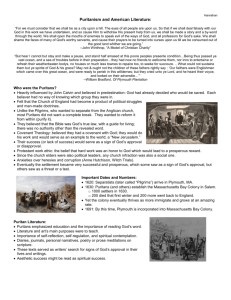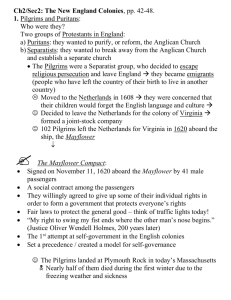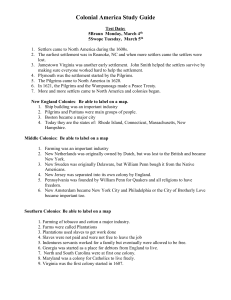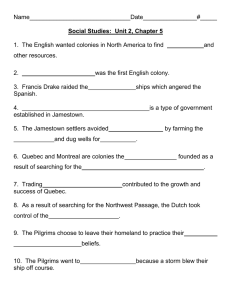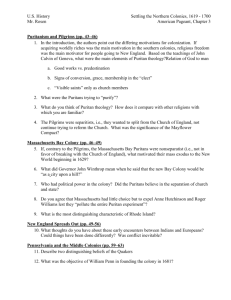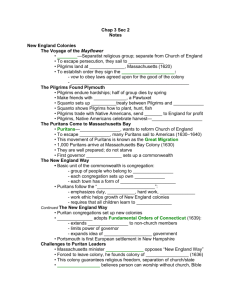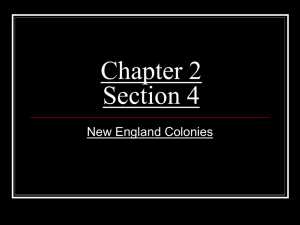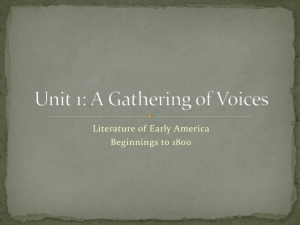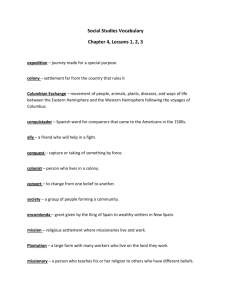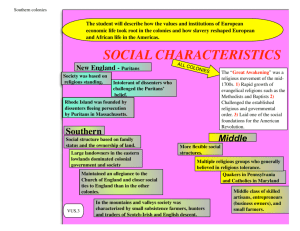British Colonial America 1600
advertisement
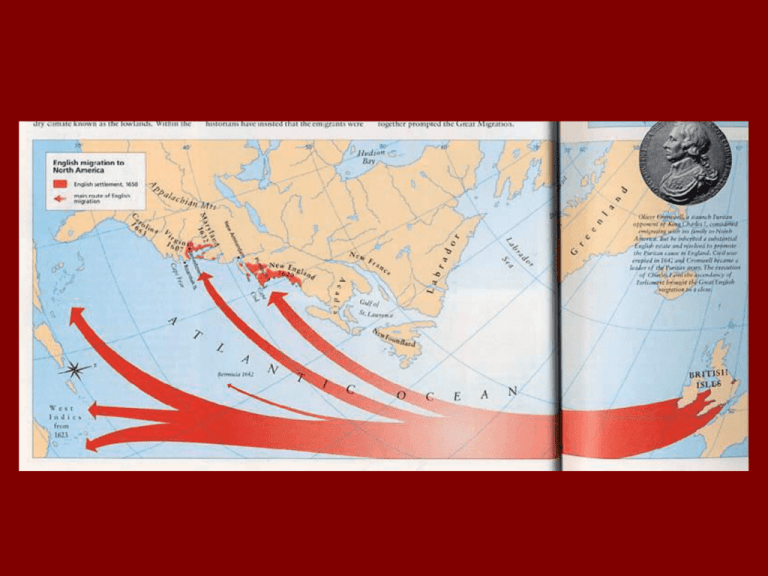
Early English Migration Map New England Different! • Objective more idealistic • Freedom of Worship • More faithfully reproduced English life in the New World • Social life; town life – more dynamic settlement! Plymouth Rock - 1620 Plymouth • First permanent colony in the north • Pilgrims – religious left-wingers • Separatists – fled the country – 1609 to Holland – 1620 to Americas • Hit the beach at Plymouth Rock – Not a successful colony – Boston much more so Boston Massachusetts Bay Colony Members were Puritans The most obvious difference between the Pilgrims and the Puritans is that the Puritans had no intention of breaking with the Anglican church. The Puritans were nonconformists as were the Pilgrims, both of which refusing to accept an authority beyond that of the revealed word. But where with the Pilgrims this had translated into something closer to an egalitarian mode, the Puritans considered religion a very complex, subtle, and highly intellectual affair," and its leaders thus were highly trained scholars, whose education tended to translate into positions that were often authoritarian. Map – early New England Migration Land Distribution • Distinctive “New England” style • Compact communities • Adjacent Land Survey Systems Anyway • Lots of 5 to 10 acres – house, garden and orchard • Very egalatarian • Assigned by drawing • Some variation - e.g., proprietor go first • Town plots and farm plots • Purpose – communities of small landholders Village Green • Commons (…and the tragedy thereof) Sum – advantages: • Compactness of settlement – social and cultural values could be maintained • Quote…… Josiah Holland, 1855 in History of Massachusetts “The influence of this policy (community settlement) can only be fully appreciated when standing by the side of the solitary settler’s hut in the West, where even an Eastern man has degnerated to a boor in manners, where his children have grown up uneducated, and where the sabbath has become an unknow day, and religion and its obligations have ceased to exercise control upon the heart an life.” Sum - advantages • Compactness of settlement • Protection from Indian attack • Elimination of land speculation – played very large role in American frontier history • Tradition of community planning – carried to much of the west (e.g., Mormon communities) Sum - negatives • Closed societies, once surveyed and settled, proprietors often refused any more newcomers • Hence, privileged landholding class • Later arrivals often laborers and renters • Political power – landowners Aka… the “Landed Gentry” 1680s – New England • Settlment comparable to that in the south; i.e., the lowland areas all occupied, including coast and fertile interior vallesy; expansion up into the hills, and across the uplands – societal differences on less productive land; but then………. 1675-77: King Phillip’s War The story: Amazon.com Great Significance: 1) Coastal indian resistance pretty much eliminated; repopulated – French and Indian Wars more in the interior for the next century 2) New institution – military town on periphery Map – early colonies Map – Colonies 1660 Map – Colonies 1672 Other colonies • New Netherlands – Dutch 1621 – colony of Dutch West India Company Settlement policy – feudalistic; large tracts of land to prominent investors (patroons) – tenant farmers New Amsterdam, at foot of Manhattan, focus of all trade in and out of colony. 1664 – captured by English and “New York” Map – USA pre 1763 1770 - Economy 1770 - Immigrants 1770 - Settlement Map – boundaries in new nation
